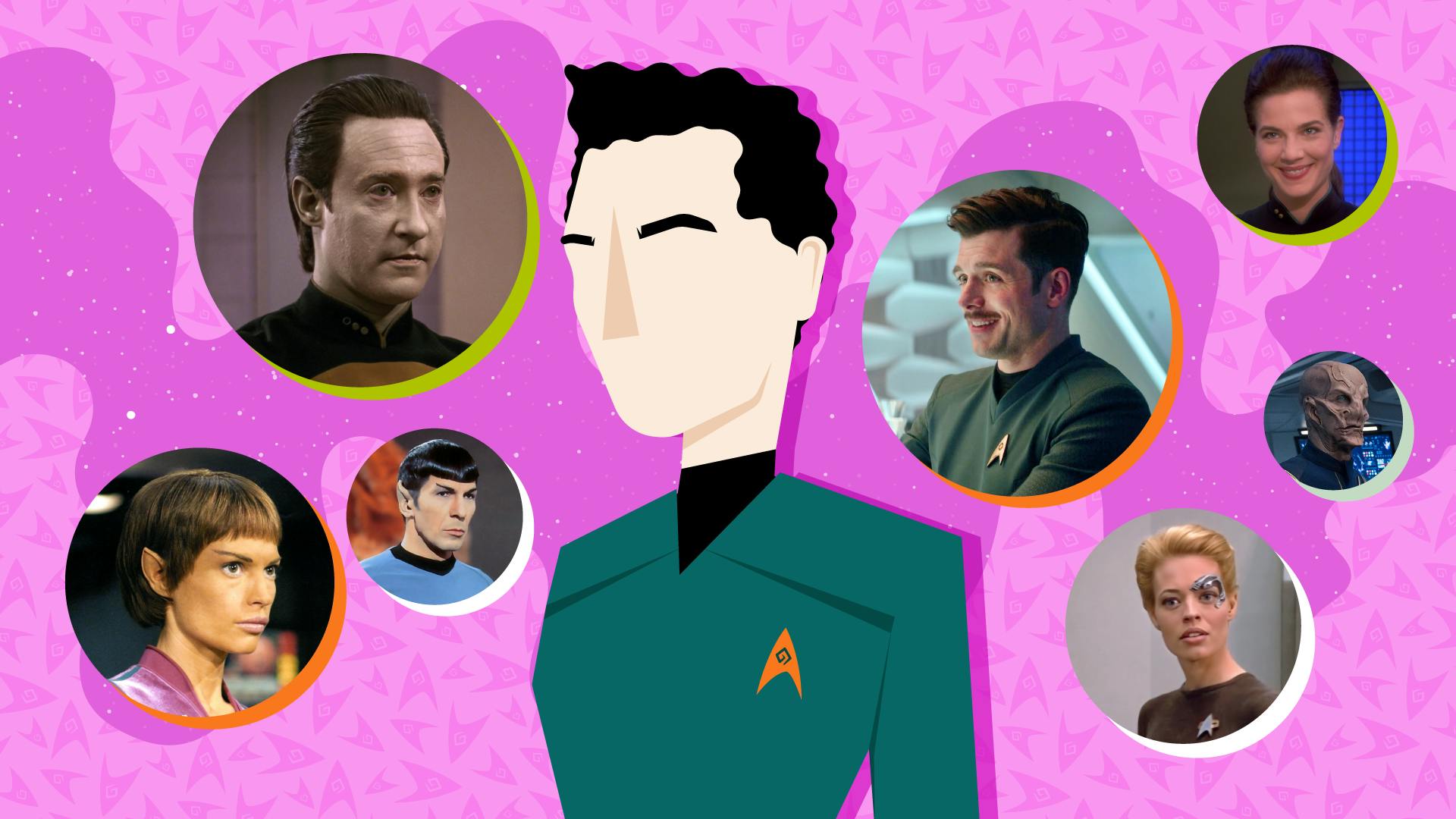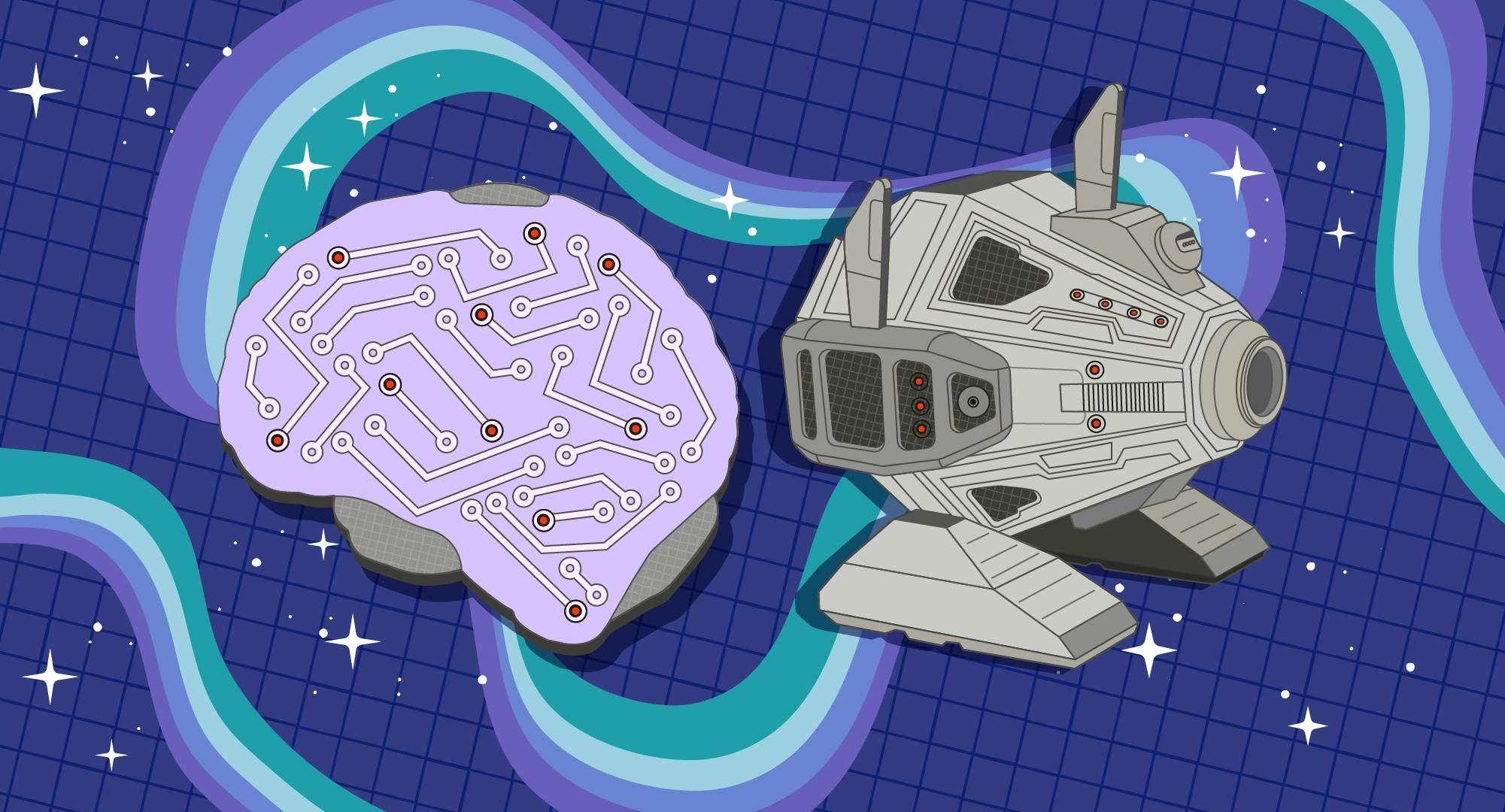Published May 4, 2023
What is a Galaxy Exactly?
The European Space Agency helps us understand the basics of our universe.
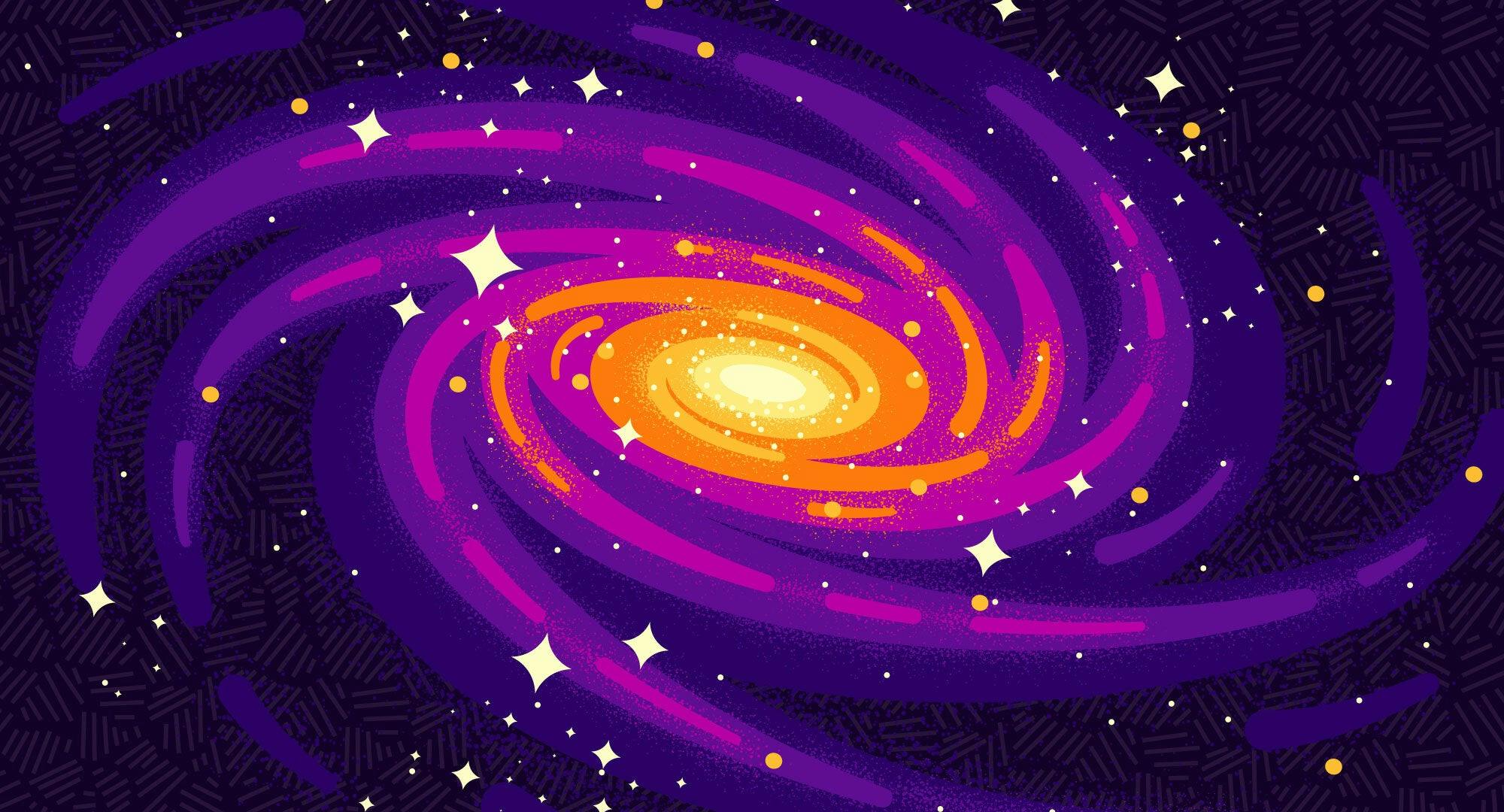
StarTrek.com
"Hear this, Picard, and reflect: 'All the galaxy is a stage.'"
— Q, "Hide and Q"
— Q, "Hide and Q"
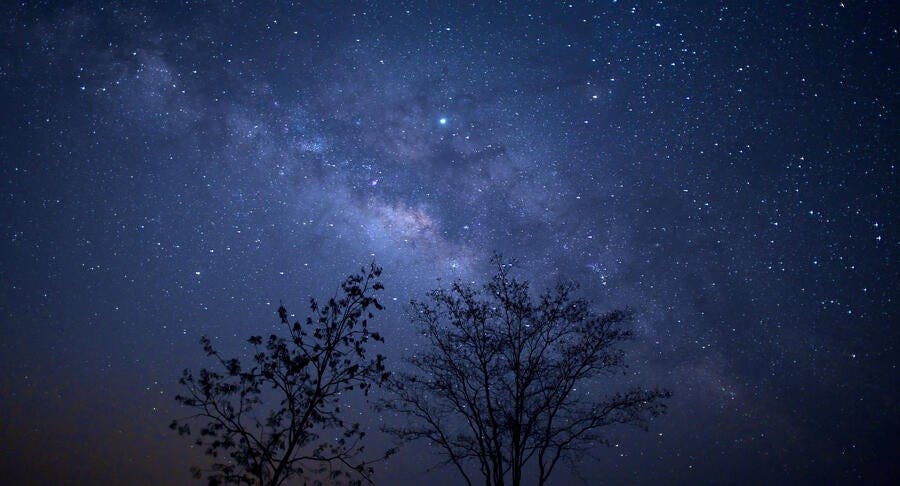
StarTrek.com
With one look up at the clear night sky from a dark spot (as in, not from a city), humans can see the overwhelming amount of stars visible to the naked eye. In some areas, the number of stars is so large that all you see is a fuzzy “milky” band across the sky. This band is the galaxy we live in — The Milky Way.
A galaxy is simply a mass of stars, gas, and dust, all held together by gravity, the same force that keeps people on the ground instead of floating away. Our galaxy is so large that light takes 100,000 years to cross from one side to the other. That leaves a lot of stars and planets still to be discovered for Star Trek in our galaxy alone!
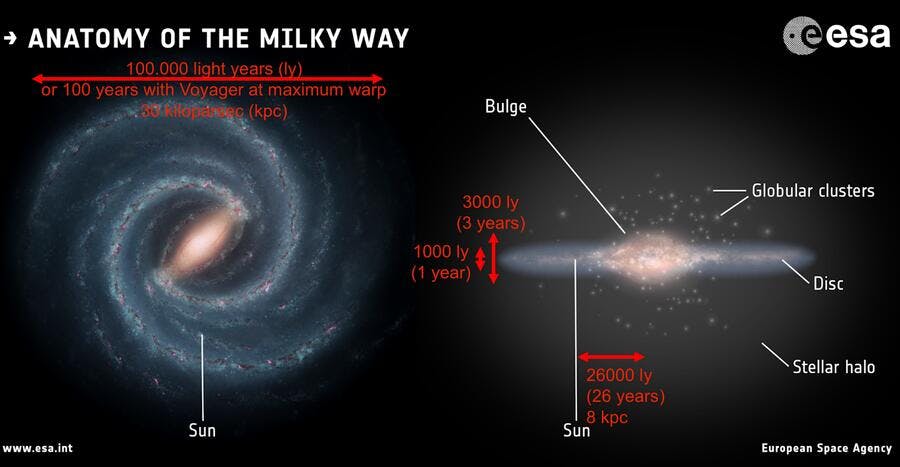
Anatomy of the Milky Way. The Milky Way in top (left) and side (right) view. Illustrated are the different components and the approximate position of our Sun in the galaxy. Adapted from ESA, to indicate the size in light years (and Voyager maximum warp travel time).
ESA
But the universe holds plenty of other galaxies aside from the Milky Way. Most of the nearby galaxies astronomers have observed can easily be classified into four groups: spiral galaxies, elliptical galaxies, irregular galaxies, and merging galaxies.
Spiral galaxies like the Milky Way, and our neighboring galaxy Andromeda, show clear disks and spiral arms and still actively form stars. Elliptical galaxies, on the other hand, are like smooth, squished spheres with very little structure or on-going star formation. Irregular galaxies like the two Magellanic Clouds are — you guessed it — irregularly shaped. And merging galaxies are simply some of the former three who are in the process of merging into one galaxy.
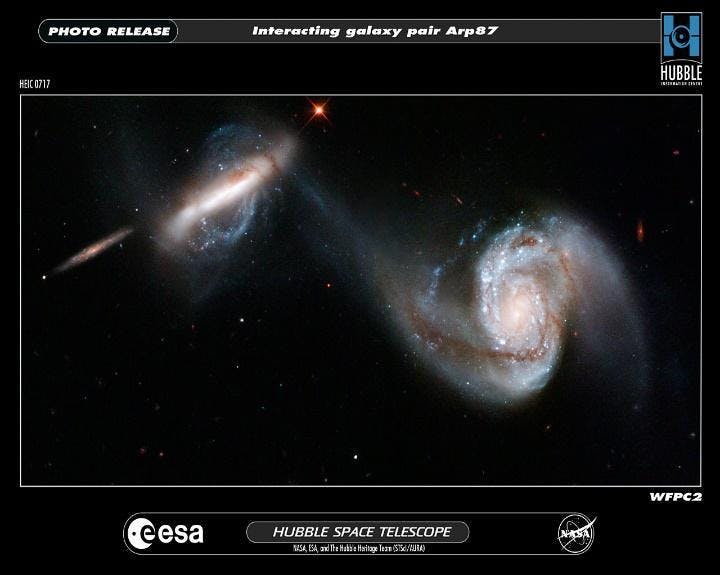
Interacting galaxies Arp87 in the Leo constellation.
NASA, ESA, and the Hubble Heritage Team
With the advent of larger telescopes, and the launch of space telescopes such as the Hubble Space Telescope astronomers were (and still are) able to explore more of the Universe and have looked beyond our neighboring galaxies. When Hubble was first pointed to observe a tiny, seemingly empty, piece of sky in the constellation of the Big Dipper (Ursa Major), nobody knew what to expect.

Illustration of the size of the deepest observations within the Hubble Space Telescope, labelled as XDF, in comparison to the apparent size of the full moon on the sky.
NASA, ESA, and Z. Levay (STScI), T. Rector, I. Dell'Antonio/NOAO/AURA/NSF, Digitized Sky Survey (DSS), STScI/AURA, Palomar/Caltech, and UKSTU/AAO
That tiny piece of empty sky, however, revealed more than 3000 galaxies!
When comparing these distant galaxies to those we see in the local universe, astronomers found that distant galaxies look very different. They are much more irregular, and often smaller and clumpy.
Since the speed of light is finite, the light from increasingly distant galaxies takes time to reach us. Consequently, the further away a galaxy is located from us, the further we look into the past. Take for example, the light from our own Sun; it takes eight minutes to reach the Earth. The Andromeda Galaxy, one of our close neighbors, is already 2.5 million light years away from the Milky Way. By observing distant galaxies, we observe how they appeared billions of years ago when the Universe was only a fraction of its current age of about 13.8 billion years. This makes observing the distant universe a great way to also study its history.
Astronomers still try to understand today, how the galaxies of the early universe grew, and how they evolved over time to become the smooth and regularly shaped Spirals and Ellipticals we observe in our cosmic neighborhood.
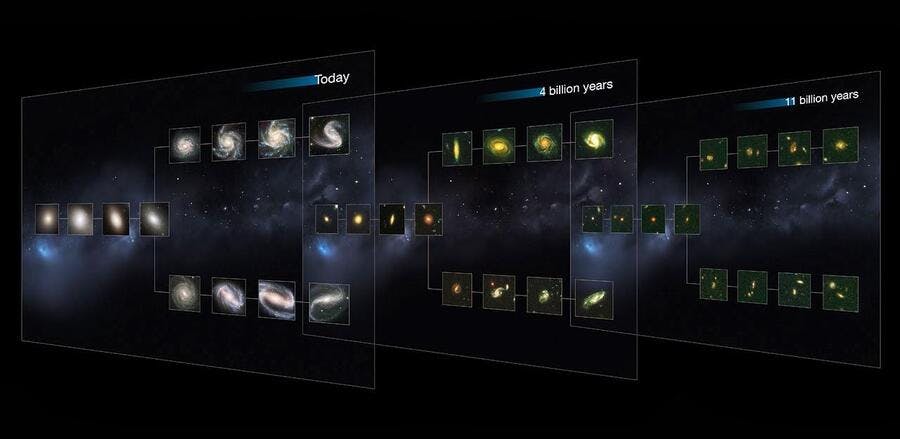
Three diagrams showing how galaxies at different ages of the universe looked like. On the left are galaxies as they appear today from elliptical to spiral galaxies sorted in the Hubble Tuning Fork Diagram. The middle figure shows galaxies as they appeared 4 billion years ago sorted into the same diagram. The right diagram shows the youngest galaxies from 11 billion years ago.
NASA, ESA, M. Kornmesser; the CANDELS team (H. Ferguson)
In order to find the very first galaxies in the universe, astronomers need new telescopes such as the James Webb Space Telescope (JWST). JWST is a collaboration between NASA, ESA, and the Canadian Space Agency to design and construct a successor to the Hubble Space Telescope.
Given the great strides that were made with Hubble Space Telescope observations, we can’t wait to see what new discoveries JWST will bring!

